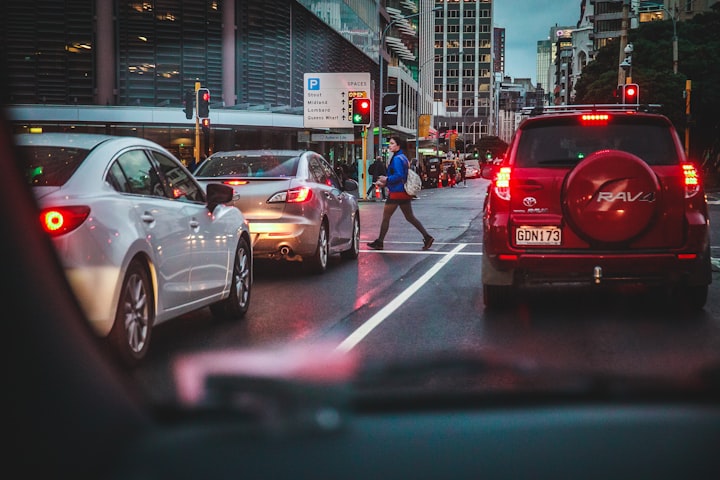Jaywalking: The History of a Reckless Crime
The Evolution of Jaywalking Laws in America

Jaywalking is illegally crossing the street outside a marked crosswalk or against a traffic light signal. However, most of us do it every day without even thinking twice. But have you ever wondered how something so harmless could result in a potential fine of up to $250?
Well, the apparent answer is pedestrian safety - sure, we don't want people getting hit by cars - but the honest answer is much more complicated than that. It all started back in the day before cars took over the world. The streets were a bustling hub of daily life, with pedestrians, street vendors, streetcars, and even kids playing, all sharing the road. People just dodged traffic like a game of Frogger, which was so common that the Brooklyn baseball team was named after it.
But then, in the 1920s, the automobile became a popular choice among wealthy joyriders, and with that, the number of people killed by cars skyrocketed. The public outcry grew against these reckless "J" drivers, a term derived from Midwestern slang for a country bumpkin, someone who doesn't belong in the city or doesn't know how to behave there.
The backlash against "pleasure cars" gave way to action from anti-automobile activists and cue the angry mobs. In 1923, 42,000 people in Cincinnati signed a petition to limit cars to 25 miles per hour. The threat of regulation sent the auto industry into a frenzy, organizing a well-funded and massive campaign to crush the plan and jumpstart the publicity crusade for cars to take over the streets once and for all.
One example of this campaign was the 1928 Municipal Traffic Ordinance, which outlined the stricter pedestrian rules we're familiar with today. Groups also led safety campaigns nationwide to teach pedestrians about the newly invented term "jaywalking." Leaflets were distributed by street corner boy scouts en masse, explaining and discouraging the practice. Yep, that's right - boy scouts helping people cross the street.
Those who did not abide by the new rules were publicly called out. Department store Santas shouted through megaphones, clowns portraying Jaywalkers took on ridicule, and judge impersonators held mock hearings for rascally kids who ran out into the road—something that used to be acceptable to do, believe it or not. Developing a culture of shame was essential in reframing street safety as the pedestrian's responsibility.
And so, the auto industry won the right to the road and sacrificed walkable streets at every turn—literally every street turn. But after a century of jaywalking, cars may finally lose their ownership of roads, even in Kansas City (where jaywalking got its official name), which voted to remove its prohibition of jaywalking in 2021.
Our car-dominated cities do not benefit the majority of the people that live there. They were made this way to help the car industry. 78% of Americans admit to jaywalking. Ultimately, building walkable spaces will save more lives than enforcing jaywalking. Instead of punishing those who cross the street outside a marked crosswalk, we should focus on creating safer, more walkable environments for everyone. Let's prioritize pedestrian safety.
That being said, change is possible. More and more cities are implementing pedestrian-friendly initiatives such as bike lanes, pedestrian zones, and public transportation. Some cities have even experimented with car-free streets or days to encourage people to get out of their cars and onto their feet or bikes.
We can also advocate for more walkable and bikeable spaces in our communities and be mindful of our transportation habits. Instead of driving that short distance to the grocery store, we can walk or bike there. We could carpool with coworkers or take public transportation more often.
So, let's strive towards a future with fewer cars and more walkable, livable cities. And in the meantime, remember to look both ways before you cross the street - or else you might get a friendly reminder from a police officer or a grumpy pedestrian.





Comments
There are no comments for this story
Be the first to respond and start the conversation.